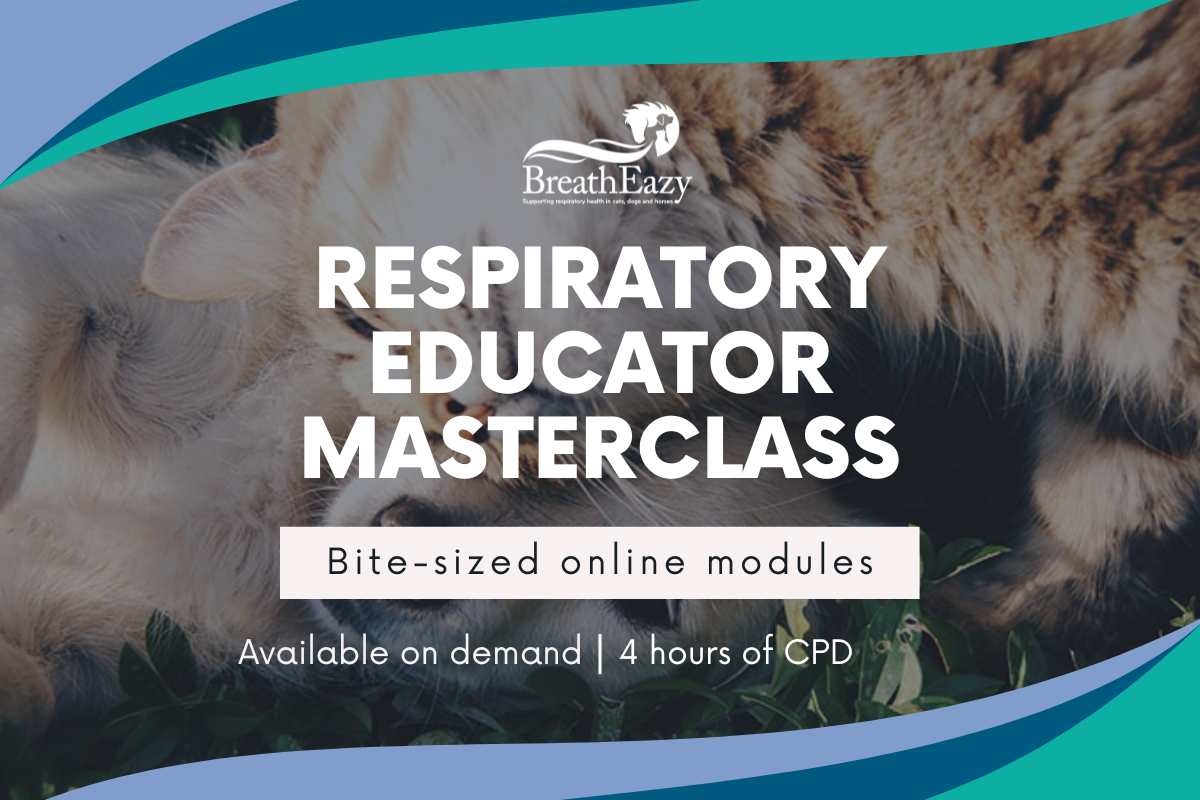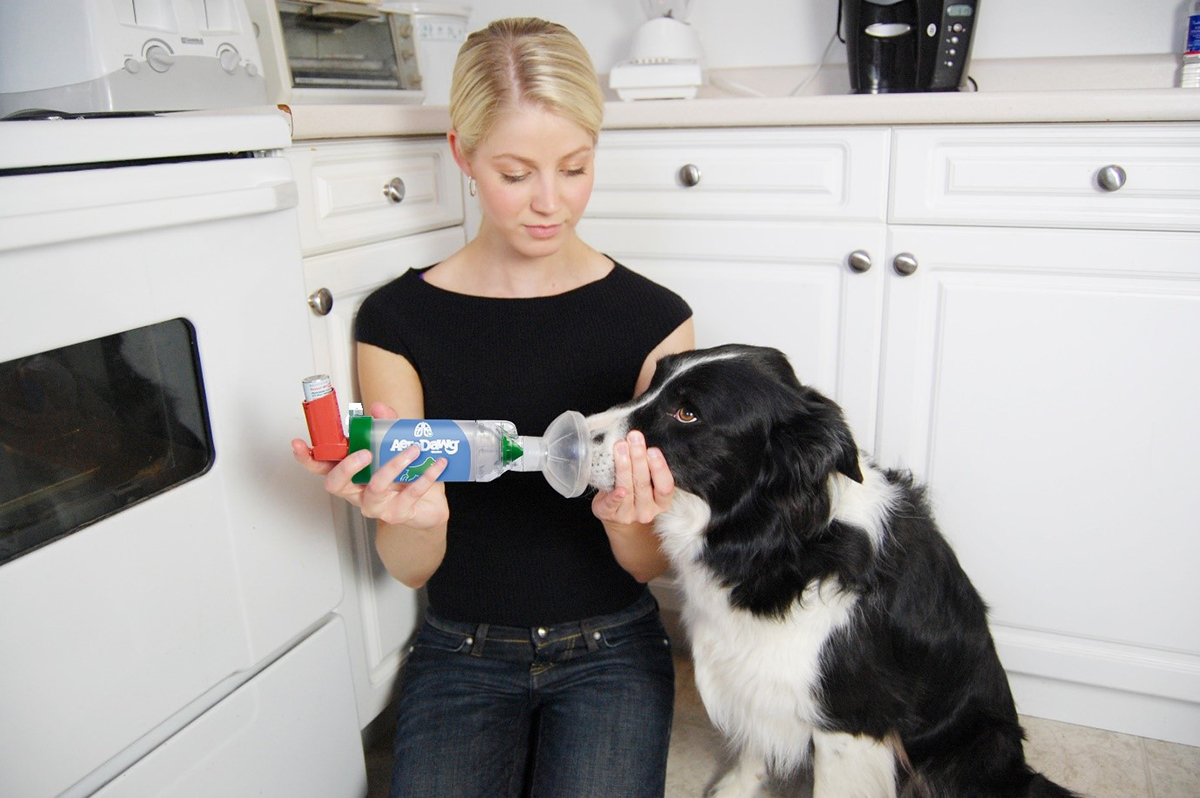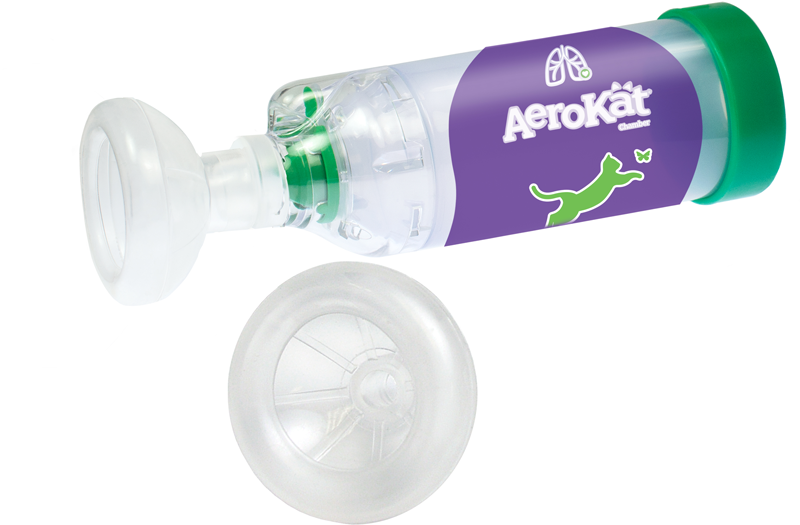Advertorial
01 May 2024
Free Respiratory Educator Masterclass CPD
Complete the Respiratory Educator Masterclass for the latest insights in respiratory medicine and to claim your free AeroKat® or AeroDawg®.

From feline asthma to canine chronic bronchitis, respiratory disease is relatively common. These conditions not only compromise patient well-being and quality of life but can also present challenges when it comes to diagnosis and management.
To help you stay up to date with the latest advancements in respiratory medicine, BreathEazy, in partnership with Trudell Animal Health, has launched the Respiratory Educator Masterclass.
Complete the course and claim a free AeroKat®® or AeroDawg®
Learn all you need to know about feline asthma, canine chronic bronchitis and more, including:
- Using auscultation to guide diagnosis
- When to do a BAL
- Interpretation of lung patterns
- Updates on medical management
- Use of inhaled therapy
- Overcoming client concerns
With streams tailored for both veterinary surgeons and veterinary nurses, the webinar-based masterclass is available on-demand, with assessment by an end of course quiz.

Access the Respiratory Educator Masterclass here
About the Respiratory Educator Masterclass
- FREE to access
- Eight bite-sized modules available anytime, anywhere
- 4 hours CPD
- Streams for vets and nurses
- Claim a FREE AeroKat® or AeroDawg® on course completion*
*One AeroKat® per person while stocks last (UK residents only)
Course content
The course covers all aspects of respiratory case management, for both infectious and non-infectious disease, including the use of inhaled therapies.
Administering medication by inhalation enables the targeted delivery of pharmaceutical agents to the lungs and lower airways, with far fewer of the endocrine or immune side effects associated with systemic medication. This has revolutionised the management of feline asthma.
Dr Gonzalez also highlights the ease of administering inhaled medication, with most cat owners finding it more straightforward than giving tablets. He goes on to explain the benefits of being able to prescribe bronchodilators to manage flare-ups of feline asthma at home.
Learn more from the experts; sign up now!

Canine respiratory disease updates
While inhaled therapies are a mainstay of the management of feline asthma, they may be somewhat underutilised in canine respiratory patients. With that in mind, several recent studies have explored the use of inhaled steroids in the management of respiratory disease in dogs, for conditions like canine chronic bronchitis, inflammatory airway disease and tracheal collapse.
Chan and Johnson (2023)1 evaluated the efficacy of inhaled steroids, specifically fluticasone propionate, administered via the AeroDawg® Chamber (Figure 1) in dogs with a chronic cough due to inflammatory airway disease or airway collapse. These disorders often occur concurrently, when progressive mechanical and inflammatory insults to the lower airways can perpetuate the cough cycle.
The study, involving 32 client-owned dogs at a veterinary teaching hospital, revealed significant improvements in quality of life, together with reduced cough frequency, severity and duration, in the fluticasone treated dogs. Furthermore, owners found the administration of aerosolised medication straightforward and increasingly easy with ongoing use.

Figure 1. The AeroDawg® Chamber in use
Inhaled fluticasone in tracheal collapse
In another 2023 study which focused on tracheal collapse, clinicians compared the use of inhaled fluticasone to oral prednisone in thirty dogs with a chronic cough due to the condition2.
While inhaled corticosteroids are a standard treatment modality for similar conditions in human patients, their use in dogs is less common. Both treatment groups exhibited clinical improvement, with significantly greater improvements by the end of the study in the fluticasone group.
The study demonstrated that inhaled fluticasone effectively controls tracheal collapse-associated coughing, with a far lower incidence of side effects compared to oral prednisolone.
Both studies highlight the potential benefits of inhaled therapies in the management of canine respiratory disease.
Why choose the AeroKat® or AeroDawg®?
When considering inhaled medication in feline or canine respiratory patients, the choice of spacer is critical to ensure treatment success and good clinical outcomes.
While lower-cost spacers, often designed for human paediatric use, might seem appealing to owners, they usually result in poorer control of clinical signs and increased medication costs due to wastage.
Poor control of signs due to unsuitable spacers may also lead to prolonged reliance on systemic medication, increasing the risk of side effects and associated co-morbidities.

Figure 2. The AeroKat® Chamber is designed specifically for cats
- Good mask seal decreases loss of aerosolised medication to the air or skin
- Low-resistance valve tailored to veterinary patients with low tidal volumes and flow rates
- Maximises dose per breath
- Sensitive enough to open during respiratory distress
- Minimal leakage from the chamber4 to optimise delivery and reduce medication wastage
- Drug delivery efficiency increased by up to 40% with anti-static chamber5
- Flow-Vu® technology confirms proper mask seal
- Training to accept an Aero® Chamber is easy: median time to compliance in cats is six days6
How to claim your free AeroKat or AeroDawg*
Email [email protected] with:- Certificate of completion (Respiratory Disease Management Masterclass)
- Your name and veterinary practice details**
- Delivery address
** One free AeroKat® per person (UK residents only)
For more information on the AeroKat® or the AeroDawg® and the management of respiratory disease in cats, dogs and horses, visit www.breatheazy.co.uk or email [email protected]
References
- Chan JC and Johnson LR (2023). Prospective evaluation of the efficacy of inhaled steroids administered via the AeroDawg spacing chamber in management of dogs with chronic cough, J Vet Intern Med 37(2): 660-669. doi:1111/jvim.16673
- Talavera-López J, Sáez-Mengual O and Fernández-Del-Palacio MJ (2023). Comparative Study of Inhaled Fluticasone Versus Oral Prednisone in 30 Dogs with Cough and Tracheal Collapse, Veterinary Sciences, 10(9): 548. https://doi.org/10.3390/vetsci10090548
- Nagel M, Hoffman N and Sartori S (2022). Effectiveness of pediatric inhaler chambers in cats with asthma (abstract), Trudell Animal Health, ACVIM 2022.
- Nagel M, Hoffman N and Sartori S (2021). Stopping Leaks in the chamber. Differences in valve performance on inhalation and exhalation leakage for pet inhaler therapy (abstract), Trudell Animal Health, ECVIM-CA 2021.
- Trzil, J. E. (2020). Feline asthma: diagnostic and treatment update, The Veterinary Clinics of North America: Small Animal Practice 50(2): 375-391
- Sartori S, Herr J and Rozanski E (2021). Time to acceptance of aerosol delivery chamber in healthy dogs and cats (abstract), Trudell Animal Health, BSAVA Congress 2021.

